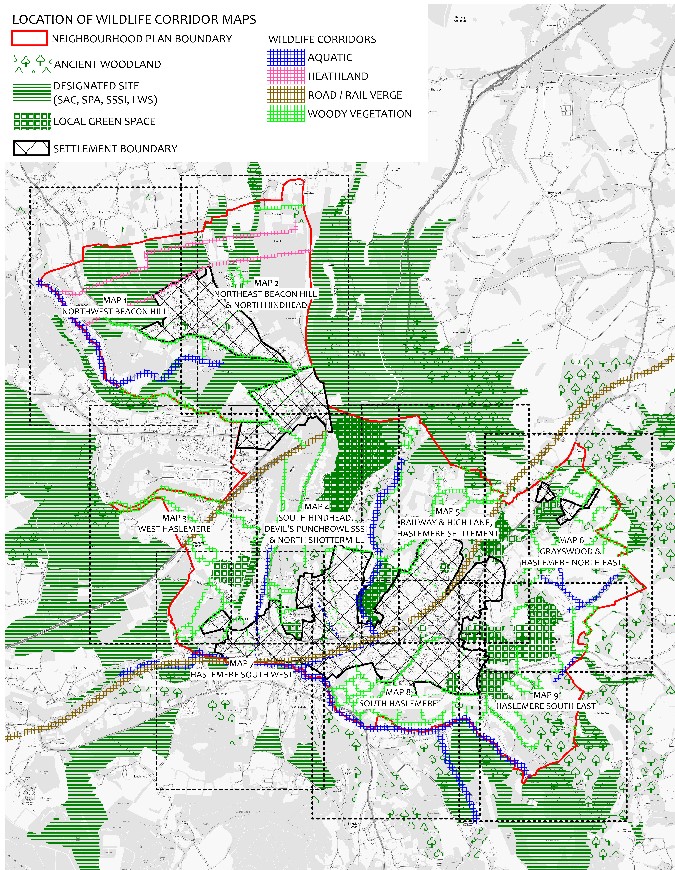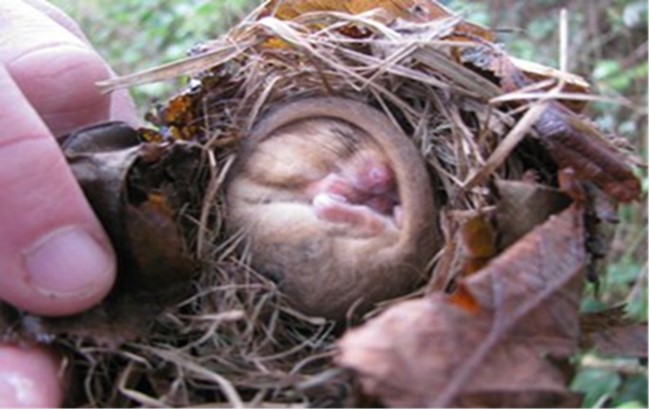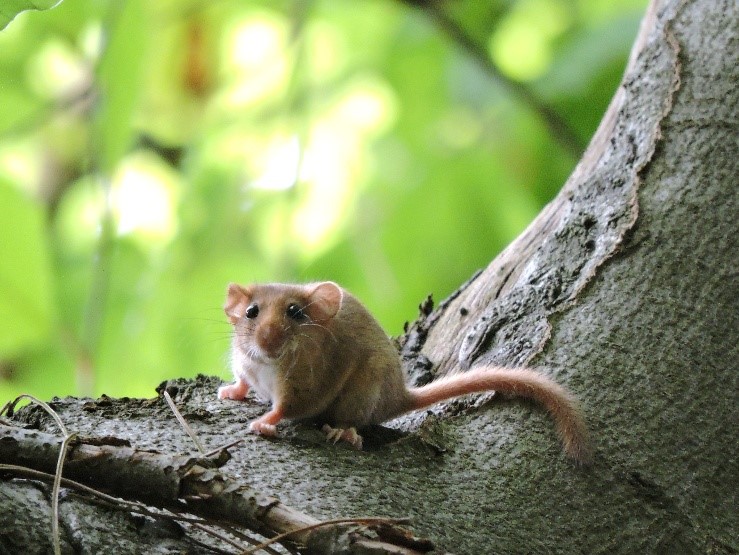Discovering the HEN
Haslemere Biodiversity Group (HBG)
By Matt Mallinder of CPRE Surrey (published in the CPRE Summer Newsletter 2023)
Living for the last 20 years in Haslemere on the edge of the National Trust’s Polecat Copse, I was aware of the myriad of wildlife outside my back gate – Bats, Deer, Foxes, Kites, Grass Snakes and we once had a regular visiting Dormouse.
It was a Dormouse project advertised in a local shop front that drew me to the work of the Haslemere Biodiversity Group (HBG) and a chat with their Chair, Dr Philippa Guest, to find out more. The volunteer led group was set up in 2020 to inform the Haslemere Neighbourhood Plan by gathering data to evidence Haslemere’s rich biodiversity. CPRE Surrey amongst other organisations helped fund a biodiversity audit of Haslemere’s Ecological Network (HEN).
The HEN shows that Haslemere’s mix of woodland, heathland, River Wey tributaries and acid grassland, many of special nature conservation value, features 150+ wildlife corridors and is home to many protected species including twelve Bat species, Nightjar and our aforementioned friend, the Hazel Dormouse.
The results provided a baseline to inform a set of environmental policies in Haslemere’s Neighbourhood Plan, policies formally adopted by Waverley Borough Council in 2021. Going forward these will help inform planning and development decisions in the future. First job done…
HBG work continues to develop policies, plans and partnerships that will protect and enhance Haslemere’s rich biodiversity assets for the long term, by creating a Haslemere Nature Recovery Strategy linking to other similar initiatives across the county. Recently they’ve been running several mini-projects providing practical examples of local conservation projects on selected endangered and protected species.



Dormouse corridor survey
Haslemere is apparently a ‘hot spot’ for the European or Hazel dormouse (Muscardinus avellanarius). Working with the Surrey Dormouse Group, local landowners and volunteers, this project seeks to monitor populations and determine the types of habitat corridors utilised by this species on the eastern side of the HNP area.
Landowners in Grayswood on Haslemere’s boundary are hosting 50 Dormice nest boxes along a 3 km corridor of small woods and mature hedgerows. Findings will be used to develop good practice guidelines for landscape design, safeguarding wildlife corridors and promoting biodiversity gain. Monitoring will continue in 2023 with plans to link up with other local Dormouse projects and Surrey Wildlife Trust’s ‘Save the Surrey dormouse campaign’.
Riparian mammal survey
Water voles were historically present in Haslemere along the River Wey during the 1990’s. Evidence of otter was also observed in 2020 in Frensham, about 20km downstream. HBG commissioned mammal ecologist, Andrew Rothwell, to assist with a riparian mammal survey in and around Haslemere to see what mammals currently live in the headwaters of the Wey and whether otters are visiting the area. ‘Riparian’ relates to things living on or located on the bank of rivers or lakes (I had to look it up too). Foot-print rafts were installed along a 5km stretch of upper Wey and identified otter droppings (spraint) as well as an active mink population. Using this evidence HBG are in discussions with National Trust and other partners to assess the potential for a water vole recovery project through improved habitat management and mink control.
Next steps and how you might get involved
Haslemere Biodiversity Group are working to create a ‘formal’ Haslemere Nature Recovery Strategy, to be published later this year. They are looking to engage more people to raise awareness of local biodiversity initiatives and pursue partnership projects. They are looking to build network of trained volunteers to support specific projects and/or ‘Ground-truth’ the HEN to consolidate the knowledge base and identify priority areas for protection/ enhancement. Evidence talks; so they will work with legislators and planners to ensure the HEN maps and policies are an integral part of all local planning and development decisions.
Find out more by contacting Dr Philippa Guest, Chair, Haslemere Biodiversity Group, at info@haslemerebiodiversity.org.uk.